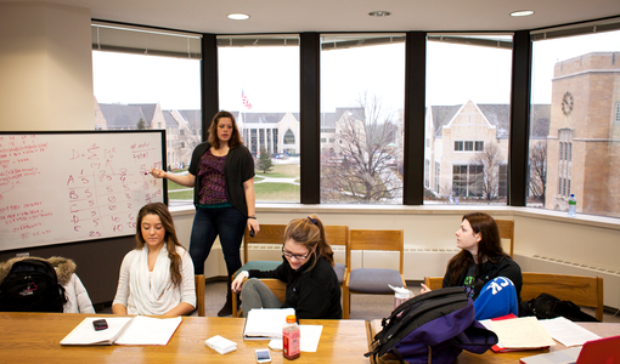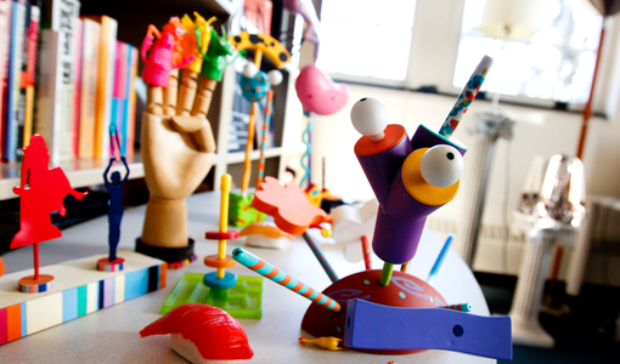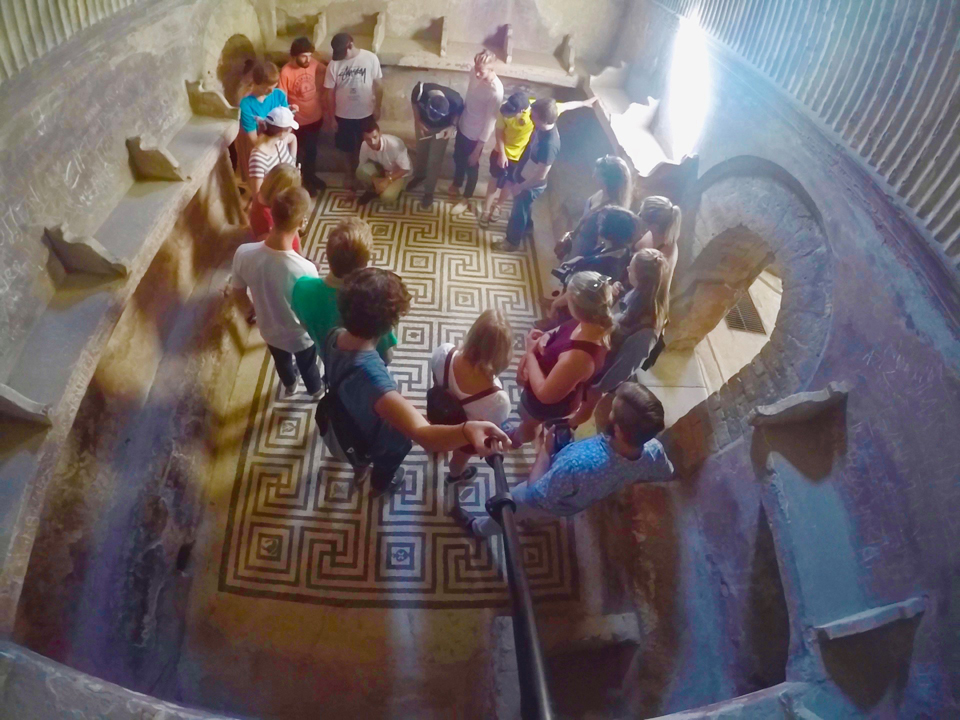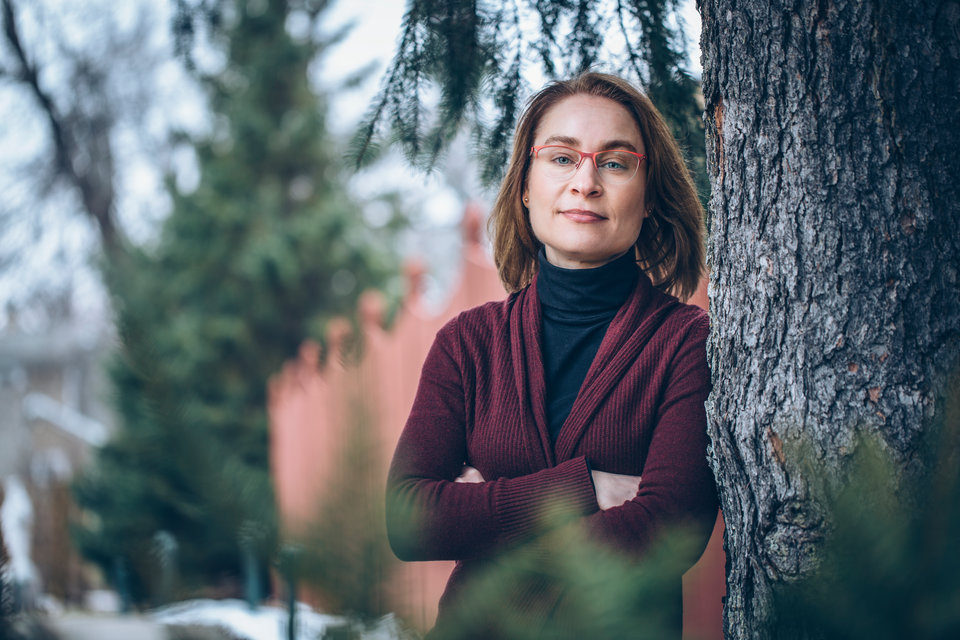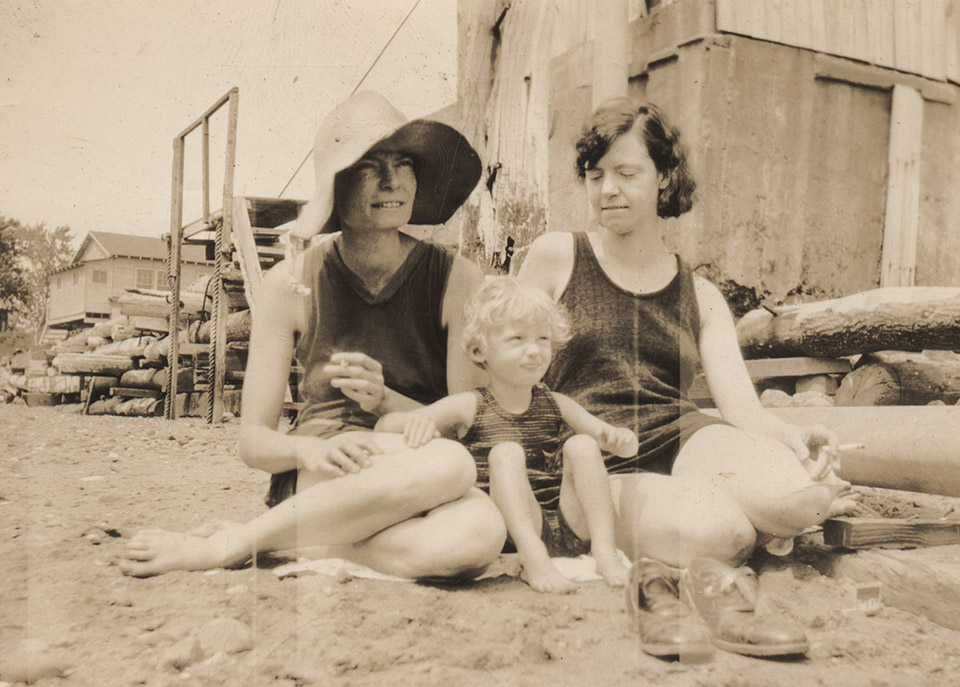“THE MEANING OF ‘KNOWING’ HAS SHIFTED FROM BEING ABLE TO REMEMBER AND REPEAT INFORMATION TO BEING ABLE TO FIND AND USE IT.” -NOBEL LAUREATE HERBERT SIMON, 1996
I have spent much of the last 12 years teaching various topics in statistics, research methods and measurement to undergraduate and graduate students at St. Thomas and elsewhere. My students typically have been hard working and eager to learn. They came to class and took notes. They learned the steps of important processes. Their nodding heads indicated that they understood the material as it was being presented to them. And yet, these bright and capable students often had difficulty applying course material in novel or ambiguous but true-to-life contexts. Despite the clarity of my explanations or the number of times I demonstrated how to apply concepts and processes, students often didn’t know what to do with what they knew.
I came to understand that remembering and understanding are necessary, but not sufficient, for the kind of “knowing” that allows one to think critically and solve complex problems. This realization seemed particularly problematic, as it is precisely this type of“knowing” our students need now, in our increasingly technical and competitive world.
While this need for knowing exists in all disciplines, it may be especially urgent for the Science, Technology, Engineering and Mathematics (STEM) disciplines. In 1996, the Advisory Committee to the National Science Foundation, responding to a call to improveundergraduate STEM education, published “Shaping the Future: New Expectations for Undergraduate Education in Science, Mathematics, Engineering, and Technology.” One of its recommendations called for faculty teaching undergraduate STEM courses to “build inquiry, a sense of wonder and the excitement of discovery, plus communication and teamwork, critical thinking, and lifelong learning skills into learning experiences.”
At St. Thomas, STEM faculty members have taken to heart the call to actively engage students through critical thinking and collaborative problem solving.
In spring 2010, Kris Wammer, associate professor of chemistry, organized a two-day workshop on the use of Peer-Led Team Learning (PLTL) in entry-level STEM courses. PLTL involves groups of six to 12 students who take the same course (e.g., Chemistry111) and work with trained peer-facilitators to address problems that facilitate conceptual understanding of course material and the development of problem-solving skills. The workshop was well attended by biology, chemistry, mathematics, computer and information sciences, geology, physics and engineering faculty. At its conclusion, faculty decided to initiate a PLTL program for students taking introductory STEM coursesat St. Thomas.
After an intense summer of planning, the PLTL program was ready to launch: A program structure consisting of a coordinator, four departmental liaisons and 16 to 20student peer-facilitators was agreed upon; shortterm funding to support a program coordinator and pay peer-facilitators for the 2010-2011 academic year was secured from the dean of the College of Arts and Sciences and the Biology Department; discipline-specific peer-facilitators were recruited and trained; concept-focused, problem-based activities were developed by departmental liaisons for use by peer-facilitators in small-group sessions; formal PLTL program evaluation procedures were devised; and a name for the PLTL program was created: the STEM Learning Community (LC) Program.
In fall 2010, STEM LCs emphasizing collaboration, active learning, problem solving and critical thinking were introduced. Each semester since then, STEM LCs have been offered to about 300 chemistry students, 200 biology students, 130 calculus students and 90 statistics students, most of whom are first-year college students at St. Thomas. Between 180 and 240 students participate in the STEM LCs each semester.
Research on the use of collaborative learning strategies in undergraduate STEM education suggests that they are a highly effective strategy for promoting the kind of “knowing” that is expected of STEM professionals. Evaluation of the STEM LC programat St. Thomas indicates that benefits for participants and peer-facilitators are many: learning effective study skills; acquiring depth of understanding; gaining skills in collaboration; and developing confidence in problem-solving abilities. As one STEM LCparticipant noted, “I learned different ways of approaching a problem, and if I didn’t understand something, the group was able to help.” Another participant stated, “I study more efficiently and more often” as a result of this experience.
Mithra Marcus, clinical professor of chemistry, is excited by the impact of the STEM LC program on her students. She noted, “This program has helped my students think critically about course material rather than just focus on memorizing facts.” Such an emphasis has translated into improved learning outcomes for participants. Significantly higher exam scores have been achieved by LC participants in all of the courses in which LCs are offered. In the case of chemistry, STEM LC participants scored more than five points higher, on average, than their peers on a standardized, nationally normed chemistry examination.
Through my own involvement with the STEM LC program, I am reminded that my job is not to simply tell students what is important to know. If I truly want my students to beactive learners, critical thinkers and effective problem solvers, I must find ways for them to connect with one another and with the material in deep and meaningful ways. The STEM LC program appears to offer an effective strategy for doing just that.
Read more from CAS Spotlight
